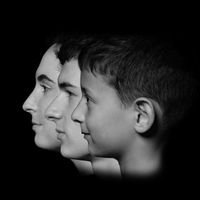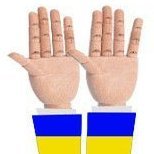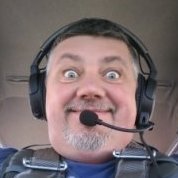-
Posts
270 -
Joined
-
Last visited
Profile Information
-
Gender
Male
-
Location
West Sussex
-
Interests
Aircraft & railways, photography and model making
Recent Profile Visitors
Jon020's Achievements

Established Member (3/9)
1.3k
Reputation
-

Revell 1/48 Chinook H.C.Mk.1 RAF ZA675
Jon020 replied to Jon020's topic in Work in Progress - Aircraft
A final update The model was unmasked, and the homemade masking blanks and the Eduard sheets came away quite well. Some painting/tidying up around the doorway and rear ramp opening were needed, but application of some suitably mixed mission models interior green (a mix of yellow and black) and some lighter grey (EDSG plus white) were applied and then sealed with some gloss varnish once it was dry. Unmasking by Jonathan Hughes, on Flickr Despite my intentions, some dust had got into the fuselage (presumably during earlier sanding); it was visible on some of the cabin windows frustratingly. I tried a few times to remove this, with a bush, with an air hose (rubber tube attached to end of airbrush) but the final method was to cut up a small brush and add a length of 1mm wire so that I could bend the head to the necessary angle, and work the bristles in between the seat webbing pieces. It worked. Dust cleaner by Jonathan Hughes, on Flickr I then unmasked and checked the wheels, found the brass tube axles for the main gear that I’d made previously and put away safely and attached the wheels to the gear legs. The wheel fits are a good tight (but not too tight) fit, so I didn’t glue them. They can therefore be rotated to ensure their flats are on the bottom when needed. The gear legs were cemented into their openings, with the wheels attached, so that it could sit on a square, flat surface whilst it cured. These mirror tiles, from Ikea I think, make a perfect temporary base to ensure everything is sitting correctly. Any error shows up easily under each wheel. The rear ramp ‘prong’ pieces were fettled so that the ramp then sat at a shallow enough angle to provide a 5th touch-point with the ground. Undercarriage assembly and ramp attachment, check by Jonathan Hughes, on Flickr One of the fiddly jobs I’d been putting off a bit was that of adding the filter material to the intake covers. The instructions showed the shapes to be cut out from the provided mesh sheet, so I spent some time looking at these and at the intake pieces. I quickly realised that the dimensions were way-out. I therefore marked up what I thought I needed and measured, measured, measured and measured again. Fortunately, with these smaller sizes, there was enough material for a few errors to be made along the way – and for newer slightly larger parts to be cut. I used odourless CA glue to attached the mesh… and eventually managed to get it to grab and cure with the aid of a few small clamps. This was fiddly. Intake filters dimensions? by Jonathan Hughes, on Flickr The next day, I attached the filter pieces to the engine core. This was not as easy as it should have been, the parts not marrying up quite as one might hope, but some excess of white glue was used in the cone of the filter to secure it in place. It was then a case of adding all of the small blade and towel rail antennas (underneath), and the masts along the port side. Once dry, I dug out my Ammo rigging line… and realised that an alternative would be needed (I only have 0.01mm and 0.02mm). I decided to strip a length of shirring elastic from its 2 cotton outer sheaths (not the easiest of tasks) to leave the inner elastic core. I tied this around the front mast, then with minimal tension, wrapped around the outer of each of the other masts. The spare length was held in place (in tension) with some clamping tweezers, and thin odourless CA glue dropped (via a sliced cocktail stick) onto each piece where it wraps around the masts. Rigging the antennas by Jonathan Hughes, on Flickr The next day, I snipped the excess away and thought it looked fine. The cable is supposed to pass through the ferrule at the end of each mast, but I could not work out a way to do this with the parts at hand. All other parts were added, including the forward step (another item that no longer fitted as well as previously tested, but some fettling enabled a reasonably secure attachment, and the fine wire antennas that attached to the forward probes. These were made from 0.3mm nickel wire which I darkened in nickel blackening fluid, but later painted. The painting did two things, firstly darkening them a little more, but also making them a bit bulkier… they’re going to be easily knocked, so making them visible is important. The windscreen wipers when in with a little white glue and the rear ramp actuator jacks were attached. I added the rear ramp small ramps, white glued to the top of the main ramp, where they’re normally stowed. The anticollision beacon underneath was painted red and the rear nav light, white. The exhaust of the APU (?) was painted with some ammo metal shades (gun metal and white aluminium. The rotors are a gentle push fit over the spigots, so they can come off when necessary. So a final few shots (off the phone) to show status for now. In writing this, I now realise that I have forgotten a pair of transfers on the forward glazing – so I’ll add those when I can next get time on the model. Final assembly complete #1 by Jonathan Hughes, on Flickr Final assembly #2 by Jonathan Hughes, on Flickr Final assembly #3 by Jonathan Hughes, on Flickr Final assembly #4 by Jonathan Hughes, on Flickr Final assembly #5 by Jonathan Hughes, on Flickr There are things that I’m pleased about with this model, it being my first helicopter and it being the biggest model I’ve made, and it’s allowed me to appreciate the fine shape of the chinook. There are some things that I’d do differently next time, including looking more closely at the rotor hubs to drop them at their pivots so that the blades ‘hung’ a little lower. I know some say that the blades need to droop a bit more, but I don’t think they do… the blades are provided with a droop which is good, but the hubs are not provided with a means to alter the pivot points… now I know. It’s big too. I’ll be going to its home once a) its finished and b) I work out how to transport it safely. Anyway… I’ll take some proper ‘camera’ photos at some point before it heads west… and provide a RFI thread. Thanks for reading and sticking with me on this journey. Time to choose my next model now 😉 Jonathan -

Revell 1/48 Chinook H.C.Mk.1 RAF ZA675
Jon020 replied to Jon020's topic in Work in Progress - Aircraft
Hi Pete. It might be the photos.... it's pale insofar as depicting a faded finish on upper surfaces... but no it won't be getting a wash. I've lined some panel lines on the fuel tanks as they will be grubbier but the real aircraft do not have deeply coloured panel lines so this won't either. I'm quite happy that at present, the actual model looks similar to photos of the real za675 taken in the 80s. So hopefully it'll turn out ok. -

Revell 1/48 Chinook H.C.Mk.1 RAF ZA675
Jon020 replied to Jon020's topic in Work in Progress - Aircraft
The final stage of the camouflage was that of the black undersides. However, before I set out to mask and paint these, I needed to work out how I was going to tackle all of the black sections on this model as there are quite a few, and I wanted to add some variety to prevent it being too ‘plane’. I worked out that I needed about 4 ‘blacks’, excluding the antislip panels that were very shiny gloss black decals that I’d need to tackle later on. Black 1 was a dark ‘nearly black’ colour, for use on the undersides, undercarriage bays and the rotor blades. I used Tamiya black XF-1 and Neutral grey XF-53 (about 50:50) Black 2 was ‘black’ and I used Tamiya X-1 for this, applying it to the rotor hub assemblies, undercarriage legs and wheels. Black 3 was tyre black… for yes, the tyres only. This was a paler dirtier black for which a slightly lighter shade was used on the treads than the sidewalls. I used a mix of Mission Models Black and Tyre black. Black 4 was a slightly lighter shade of Black 1 used for the anti-glare panel, Tamiya black XF-1 and Neutral grey XF-53 (about 40:60). I used blu tack to make the wavy demarcation pattern, back-masked with tape, then sprayed a few light coats to each panel allowing the mottling to show through the top coat. Blu tack worms masking by Jonathan Hughes, on Flickr Underside by Jonathan Hughes, on Flickr I then added the landing light lenses using my smaller molotow chrome pen. (landing?) light lenses silvered by Jonathan Hughes, on Flickr The antiglare panel was masked carefully using Tamiya flexible tape for the basic shape then adding more Tamiya normal masking tape to provide more of a border. More masking by Jonathan Hughes, on Flickr A few light coats of the lighter black were added to form the panel, after which everything was given a few light coats of Aqua Gloss to seal and unify everything and prepare the base for transfers and setting solutions. Aqua glossed by Jonathan Hughes, on Flickr The kit transfers were used for the most part, but for ZA675 of 240 OCU RAF, I needed a few that the kit did not provide. My good friend Brian Hanson came to the rescue (again) and with some coordination, produced the squadron badge (Blue Kingfisher in a blue bordered red circle), the serial codes and the squadron codes (FI), along with some very nice Royal Air Force lettering that was nicer that those in the kit. Whilst the kit transfers took some settling with Daco Strong, settle they eventually did; those from Brian were super-thin and went down wonderfully. The Anti-slip panels took a little trimming to fit; with no provision for the upper fuselage lump that were added, or the means to align them … but some guess work won the day. These anti-slips are pretty but would need toning back later. I used some tamiya black lining ink to darken the grills on both sides; once this was dry, on a few of them, I carefully wiped a slightly dampened (white spirit) cotton bud over them to take the ink off the grill lines. They're very subtly molded (not too crips) so it didn't work fully, but it didn't look too bad and broke up the 'black' hole look otherwise. Transfers - port by Jonathan Hughes, on Flickr Transfers - starboard rear by Jonathan Hughes, on Flickr I used a piece of 300 grit sandpaper wrapped around a round pencil to carefully lightly open out the rear engine cowling holes, and then attempted a test fit of the exhaust cans. 'sanding stick' to open exhaust cans holes in cowls by Jonathan Hughes, on Flickr The exhaust cans had been primed a gloss black (Alclad/HR Hobbies/A-Stand) then given a light layering of stainless steel. Bands were then masked on the outer circumference (per photos) and further layers of hot metal sepia applied to reflect the staining evident on these cans. The inners were treated similarly at the same time. I’d usually add a layer of jet-exhaust to the inner faces but photos showed these to be quite clean. The recesses in the fan blades were picked out with Tamiya black lining ink to highlight the fan blades. Exhaust cans test fit -port by Jonathan Hughes, on Flickr Inside the exhaust cans by Jonathan Hughes, on Flickr The anti slip panels were attached with a mix of oilbrusher shades (white and starship filth) to dirty-up/tone-down/vary the finish it had until that point. Oils weathering the glossy anti-slip transfers by Jonathan Hughes, on Flickr Once complete, the panels were much more toned and I was happy to leave it at that. These would get another coat of aqua gloss to seal everything in before some further panel lining would go on around the nose and on the fuel tanks, although the rest of it I left as it was, not wanting to dirty it unnecessarily, allowing the paint finish variation to carry the effect (almost) alone. Anti slip panels weathered back by Jonathan Hughes, on Flickr The rotors were next on the agenda. The blades had been painted and had the transfers applied to the undersurfaces, so it was just a case of unmasking (removing the maskol) to leave clean mating surfaces, checking which blades went with which rotor hub, and attaching with some Tamiya thin. Unmasked rotor head and blades, for assembly by Jonathan Hughes, on Flickr The rotor head covers were also cleaned up, the maskol removed from the rotor hub attachment point to allow final assembly with some Tamiya thin. Unmasked cleaned up rotor gearbox covers by Jonathan Hughes, on Flickr And then finally, I opened out the insides of the roto head covers to give a push-fit to the spindles and put them together for a test fit and photo. The rotors don’t overly droop, but anymore and they’d run the risk of colliding with each other – something that of course wont happen on the aircraft as they’re locked through their gearing. But I think it looks ok. With these fitted, this model is quite large. It’s quite a challenge to ‘hold’ as it is… even before I add the port-side radio wire masks and everything underneath. Wish me luck with that. Rotor head assembly check by Jonathan Hughes, on Flickr It’s getting there. Thanks for reading. Jonathan -
Jon020 started following Grumman EA-6B Prowler***FINISHED***
-

Revell 1/48 Chinook H.C.Mk.1 RAF ZA675
Jon020 replied to Jon020's topic in Work in Progress - Aircraft
A brief painting update. Over the last few weekend days, I’ve applied a few coats of camouflage to the model. I started with the grey, freehand applying the tones with my 0.2mm sparmax airbrush. The paint I was using was Mission Models MMP-138 Extra Dark Sea Grey RAF. Ok, yes the colour I should be using is Dark Sea Grey, so this was going to be a little dark. I therefore mixed my own shade using a mix of EDSG with MMP-069 Light Gull Grey FS16440. I started with a mix of about 80:20 EDSG to LGG, but varied this to almost a 50:50. I built the shade up gradually, maintaining some of the underpainting (all of which I would frustratingly lose later). I used lighter shades on the upper surfaces, and darker shades on the vertical faces (to emphasize the shading effect). Camo. First shade #1 by Jonathan Hughes, on Flickr Whilst wanting to check the camo patten, I dug out a copy of a 1982 SAM, that I’d bought a copy of a few years ago as a nostalgia search, having bought this copy when it was new at the time… and yet losing it during a large pre-move clear out in the late 80s. Inside, I knew there were a pair of chinooks shown, and amazed to see that one of them was the aircraft I’m doing ZA675. Quite a coincidence! A happy coincidence from 1982 by Jonathan Hughes, on Flickr I then started with the green tone. For this, I was using MMP-077 RAF Dark Green, but again, I thought this a little too dark for the faded finish I was after. I therefore initially again mixed in some LGG (as before) in varying mixes of 80:20 RAFDG:LGG and then slightly lighter shades for the upper edges. This I felt was a little flat in colour, so I mixed in a drop or two of MMP-007 Yellow to warm it up. This gave a paler warmer green which is possibly closer to the more modern greens, but I quite liked it. All camouflage was sprayed freehand. A first attempt and doing this and it gave a slightly too soft finish, but one that possibly just about works in this scale. Second shade being applied by Jonathan Hughes, on Flickr First coats... Needs more contrast by Jonathan Hughes, on Flickr The following day, I looked at all of this and felt that the tonal contrast was too little. I therefore mixed a slightly lighter grey shade and applied this (freehand again) over the top of the original grey. Even lighter shades were applied in a mottled fashion to the upper surfaces. At the end, I though this was now too contrasty… so I parked it for a while Repaint. More contrasty. Too much by Jonathan Hughes, on Flickr I then mixed another slightly darker shade and went back over the vertical edges in a mottled fashion to darken these down. This might still be a bit contrasty, but I’m not looking at the final finish and I know I’ll lose some contrast with a gloss coat and some weathering, so I’m going to go with this, for now. Hopefully it’ll be ok and balance out once the black undersides and antiglare panel are added… which I’ll probably not do freehand. Camo. Other side by Jonathan Hughes, on Flickr Camo done by Jonathan Hughes, on Flickr Thanks for reading; comments and observations welcome. Jonathan -

Revell 1/48 Chinook H.C.Mk.1 RAF ZA675
Jon020 replied to Jon020's topic in Work in Progress - Aircraft
And... mottling coat now mostly done (underside needed still)... But this will hopefully allow some variations in tone of top coat. Have lightened upper surfaces and darker finish to flatter sides.... emphasizing shadows and highlights. I hope Mottle coat. Starboard by Jonathan Hughes, on Flickr -

Revell 1/48 Chinook H.C.Mk.1 RAF ZA675
Jon020 replied to Jon020's topic in Work in Progress - Aircraft
It'll be a mix of the age and fidelity of the kit and my cack-handed approach. I am sure others could do a better job but am gratified to see that others have had similar issues at least.... But we'll get there. I hope 🤞😉 -

Revell 1/48 Chinook H.C.Mk.1 RAF ZA675
Jon020 replied to Jon020's topic in Work in Progress - Aircraft
An overdue update… putting the big bits together. I know there are kits out there that almost fall together themselves, with excellent fit and superb finish; I think the Tamiya 1/48 Tomcat is included in this list (one of which I do have in my stash for one day) but unfortunately, I don’t believe this Revell Chinook should be included in the list. I’ll admit that many of the issues will be due to me not puling it together precisely enough, but it wasn’t for the lack of trying. Any kit that has separate internal and external components could suffer from a build up of errors along the way, but usually, using the outer parts as a guid or jig can reduce these. At least, that had been my intention as hopefully the previous post’s images implied. This one was a bit of a pig though and whilst the end result is now looking ok, it was a bit more of a battle than I’d hoped to get to that point. So, lets get back to the build. First thing I did was to go around the internal edges of the window frames with a black permanent marker to prevent colour seepage within the glazing once completed. I did this for both the internal fuselage pieces and the externals. Blackening the window frames by Jonathan Hughes, on Flickr I found that there was a little play between the glazing pieces and the internal fuselage pieces and with two of these being domed, I initially found that it was easy to push the glazing in once it was all sealed up (not something I wanted to happen) so on the domed pieces, I added some plasticard reinforcements to hold the gazing in firmly and to allow a full butt-up to the inner fuselage pieces. Glazing going in and reinforcing by Jonathan Hughes, on Flickr It was then just a case of simply (ha!) joining the three outer fuselage pieces together around the inner shell. Much use was made of masking tape and clothes pegs to hold it all together whilst the Tamiya thin dried overnight… and then again on a second day when some further glue was added where the tape had been (new tape applied) Tape and clips whilst glue cures by Jonathan Hughes, on Flickr Taped underside... Glue drying again by Jonathan Hughes, on Flickr Having joined it all together, it was clear that a degree of sanding and filling was going to be needed, especially on the underside. I masked off the open sections (just two shown here) and over several evenings sanded, filled, sanded, filled, engraved, sanded, filled… etc. The end result was not perfect but good enough once it’s all tidied. Some primer later will help that Sanding down by Jonathan Hughes, on Flickr I then spent a little time playing around with the nose glazing section, identifying where it fitted and where it didn’t. I eventually identified the snag, and sanded/filed away a protruding section of the central coaming (shown plastic brown here) that was causing the issue. Some sanding down of the inner frame of the clear piece also helped (the bit between the glazing), and a better fit was achieved. At this point, I also ‘drilled’ out the landing light inner faces which I’ll ‘silver’ later and add some glazing to cover them (at the end of the build). Trimming internal frames for better glazing fit by Jonathan Hughes, on Flickr There were a few tasks that needed doing further aft and whilst I forgot to photograph progress at the time, suffice to say, getting the engines to align with the fuselage attachments wasn’t as easy as it could have been… again, some filling and sanding was needed, but perseverance eventually won through. One item that I did remember to photograph was the tinning of the rear edge of the exhaust piece … which was a bit chunky to begin with; some sanding of the inner faces was sufficient here (sanded on left) Sanding insides of exhausts by Jonathan Hughes, on Flickr Attaching the glazing and nose cover was quite straightforward now that it’s fit was resolved and some Tamiya thin worked well. A little taping helped keep it all tight overnight. More tape whilst nose pieces cure by Jonathan Hughes, on Flickr And finally – more tape was needed to adhere the strakes to the rear ramp. Note, the kit provides straight strakes, but the shape of the ramp here has a double curvature. Nice! So, am ordeal of attaching at one end, applying more glue and ‘forming’ the strakes to conform to the double curves and holding with tape under pressure, followed with more filler/glue to fill any remaining gaps. More tape... for poor fit strakes by Jonathan Hughes, on Flickr Once all of this was complete, I popped some blutak over exposed holes and prepped the rotor heads and blades, using small craft clips to hold them together for a quick assembly check. The rotor blades do droop albeit not too much, but I’d worry about drooping them further, so these will do. Rotors test fit by Jonathan Hughes, on Flickr I then set about prepping other bits and checking assembly with some trial fits, the first being the main gear. The parts look simple but fine for what I was intending, but I am always wary of dual wheel assemblies, to ensure that at the end the model sits with all wheels on the ground (no air gaps). I therefore decided to remove the gear leg acles and drill these out, replacing them with a short length of brass tube that would pass through an oversized hole in the gear leg, to allow some ‘rock’ to cater for unevenness. Main wheel axle replacement by Jonathan Hughes, on Flickr A check of the gear legs in the fuselage revealed a further issue at the back end (possibly due to a twist of the internal floor when pulling it all together without any internal guide pins) that when ‘sat’, not all wheels touched the ground. Before, I’ve built aeroplanes and of course these, as well as most helicopters, have only three gear legs, meaning that at least the model will always sit on those three points; with four however… it’s more challenging. I eventually worked out what to shim and where and balanced all the legs out. Placing the model on a mirror made gaps easier to see… of as here, so show that they’ve been resolved (for now at least). A front-face mirror works well… but a rear face mirror (which most are) will leave a gap so chose your mirror carefully. Flat mirror test for wheel alignment by Jonathan Hughes, on Flickr I masked up all open areas with plasticard shaped pieces sealed with Maskol; glazing benefitted from some Eduard masks and some additional tape pieces where the masks needed supplementing Masking by Jonathan Hughes, on Flickr Whilst I still popped a couple of short pieces of plastic rod into the windscreen wiper holes in the glazing frame (to keep paint out)I set about cross checking photos of the aircraft I was modelling and made a few additional antennas from plasticard. Two shown here. I’d also added the forward pointing masts. I’d intended to leave these off until the end, but no matter how I looked at it I could not see how a late assembly would look good, as the fit was not ideal. I therefore did what I could and added them at this point, allowing some filler (sprue goo in this case) to be applied to seal it all in. Prior to this, I’d removed the two aerial pieces from each and drilled a 0.4mm hole through the end vertically to allow the addition of a 0.3mm wire piece in each at the end (should be a good fit once paint has got into the hole a little). I’ll just need to be careful of these for the rest of the build. Antennas #1 by Jonathan Hughes, on Flickr The upper fuselage blade antenna needed to be made up as it seemed to be missing from the kit (only one on the sprues… and that’ll go underneath). I also sorted out all the side string antenna masts, cleaning their mounting point so that they’d fit in the holes, sorted the engine intake filter cowls and forward entry door (which was a bit of a fiddle to assemble. Some additional antennas were also scratch built from plasticard and stretched sprue with reference to photos and because they were not on the kit sprues. New antennas and extras readying for paint by Jonathan Hughes, on Flickr All parts were then ‘mounted’ for priming and paint Ready for primer by Jonathan Hughes, on Flickr Prepping the rotors for primer by Jonathan Hughes, on Flickr I had a think about how I’d store the model after each paint coat has been applied and whilst I can use my usual storage (really-useful equivalents) boxes for the aircraft, I modified that approach a little for the rotor blades so that they could be stood up to dry and harden. Rotor blades storage box for paint by Jonathan Hughes, on Flickr Priming and cleaning up started with an application of black around all glazing to provide for the internal frame colour. First primer applied by Jonathan Hughes, on Flickr A coat of One-shot primer when on everywhere revealing where tidying was needed, especially underneath. All points being addressed in turn and tidied. Further filler underneath by Jonathan Hughes, on Flickr Until eventually, it all evened out enough and a final coat of primer was applied Still priming and tidying by Jonathan Hughes, on Flickr Finally, a coat of A-Stand gloss black (to enable black-basing) was applied (over two separate evenings) and allowed to dry for a few days. Black based .... ready for mottling by Jonathan Hughes, on Flickr Underside black based by Jonathan Hughes, on Flickr So that’s it for now. I need to add the mottling layer to each panel to gradually provide a non-uniform finish as an undercoat for the final top-coat colours when I get to that point. It’s been a challenge to keep at it with this kit, but it’s for a good mate and hopefully I’ll do it justice in the end. Cheers. Jonathan- 30 replies
-
- 11
-

-
I've just been made aware of this build and its finish. Absolutely fantastic!
- 30 replies
-
- 1
-

-
- Tamiya
- F14 Tomcat
-
(and 1 more)
Tagged with:
-

1/72 ClearProp Mig-23MLA Czechoslovakia - “Finished”
Jon020 replied to dimaADA's topic in Work in Progress - Aircraft
Well.. that's perfect. 😍- 143 replies
-
- 1
-

-
- 1/72
- Clearprop Models
-
(and 1 more)
Tagged with:
-

1/72 Heller Lockheed Constellation L749A
Jon020 replied to Etiennedup's topic in Ready for Inspection - Aircraft
Wow. Who doesn't love a constellation! Superb work... love the foil finish too. Is that different foils for different shades? I intent to try some foiling techniques at some point and have experimented on some small spare parts using self-adhesive foil tapes.... but want to try it some more. -

1/72 ClearProp Mig-23MLA Czechoslovakia - “Finished”
Jon020 replied to dimaADA's topic in Work in Progress - Aircraft
Another inspiring read ... amazing work. ❤️- 143 replies
-
- 1
-

-
- 1/72
- Clearprop Models
-
(and 1 more)
Tagged with:
-

Revell 1/48 Chinook H.C.Mk.1 RAF ZA675
Jon020 replied to Jon020's topic in Work in Progress - Aircraft
Ah, that's unfortunate.... something I wasn't able to determine in the photos I saw. This is mostly an out of the box build so that's something that would need fixing for a more accurate representation.... Thanks for letting me (us) know. I'll just have to carry on with what I have got now given the vague approach by Revell for the kit. Hopefully it'll be ok. Currently attempting to work out which holes to open out or close out for the various antennas and rails on the outside. Instructions a bit vague and kit fit doesn't match any photos of the aircraft I'm building, so some artistic license will need to be taken. . but I'm getting there .... I hope Cheers -

Revell 1/48 Chinook H.C.Mk.1 RAF ZA675
Jon020 replied to Jon020's topic in Work in Progress - Aircraft
Thanks... one away from the one I'm doing. Useful details, but I'm doing a mid 80s condition so I do need to check what external items were installed. Cheers -

FineMolds 1/72 F-14A Tomcat Ripper 101 by Jonathan Hughes
Jon020 replied to Jon020's topic in Ready for Inspection - Aircraft
Thanks for your kind comments. I haven't made a Hasegawa kit (although I used some Hasegawa kit decals in my VF31 GWH build) so I can't comment. Having built these four (over the last four years) I was able to undertake the comparison. Whether I'd one day make a Hasegawa kit, I'm not sure; it's now showing its age and I'd prefer to spend my time on some of the more modern tools (probably Academy and GWH as I have those to do in the stash and I think theyre worth the effort) but I will never say never. Over four years... but thanks Thanks... i think its worthwhile. Not the same degree of precision achieved by others (such as DimaADA) but I try my best. Hopefully learn with each new one. -

FineMolds 1/72 F-14A Tomcat Ripper 101 by Jonathan Hughes
Jon020 replied to Jon020's topic in Ready for Inspection - Aircraft
And just for completeness, I dug out this image i created where I compared the Tamiya artwork to that Grumman "blueprint"... just for the sake of it. Looked quite close to me. Tamiya to grumman comparison by Jonathan Hughes, on Flickr







